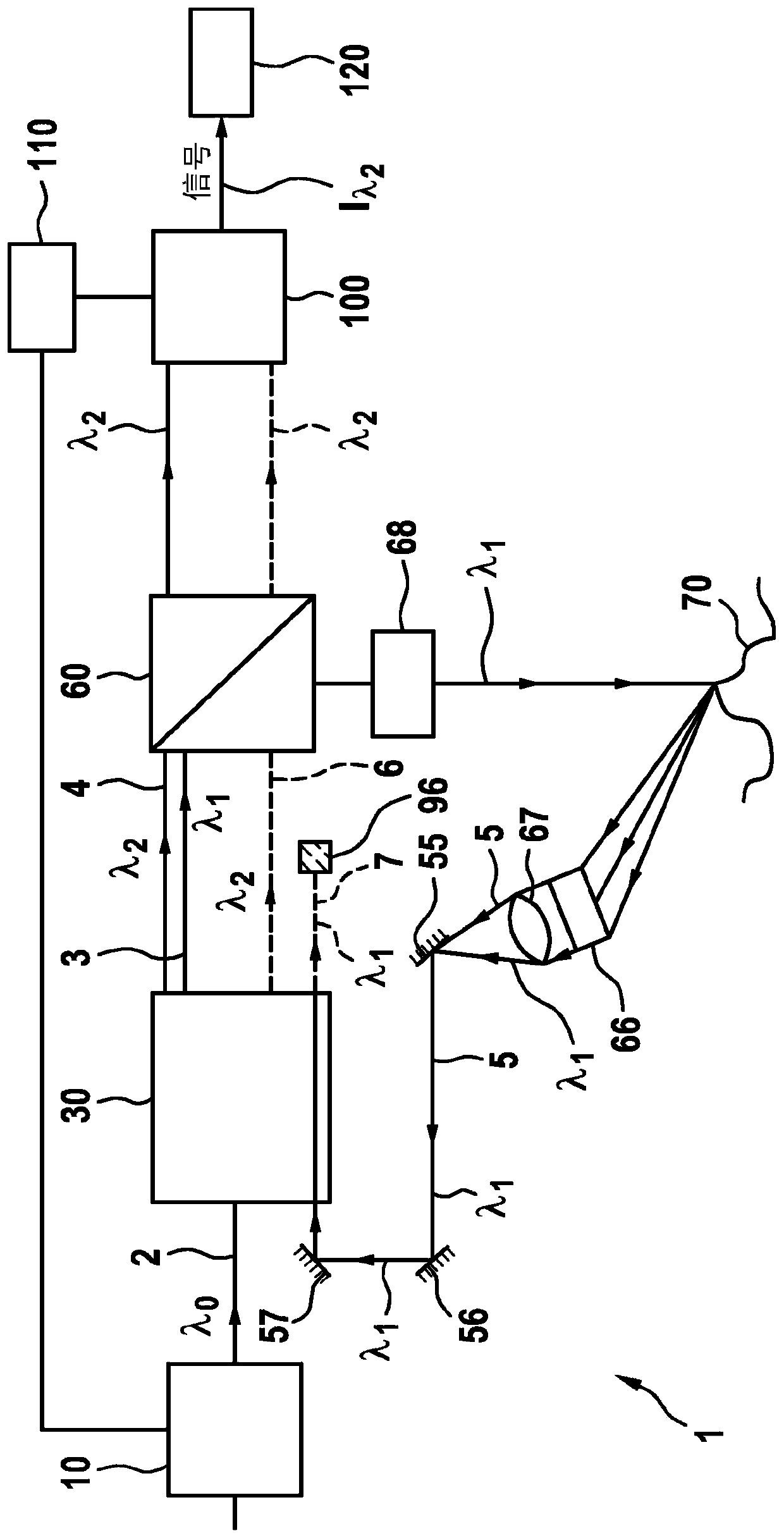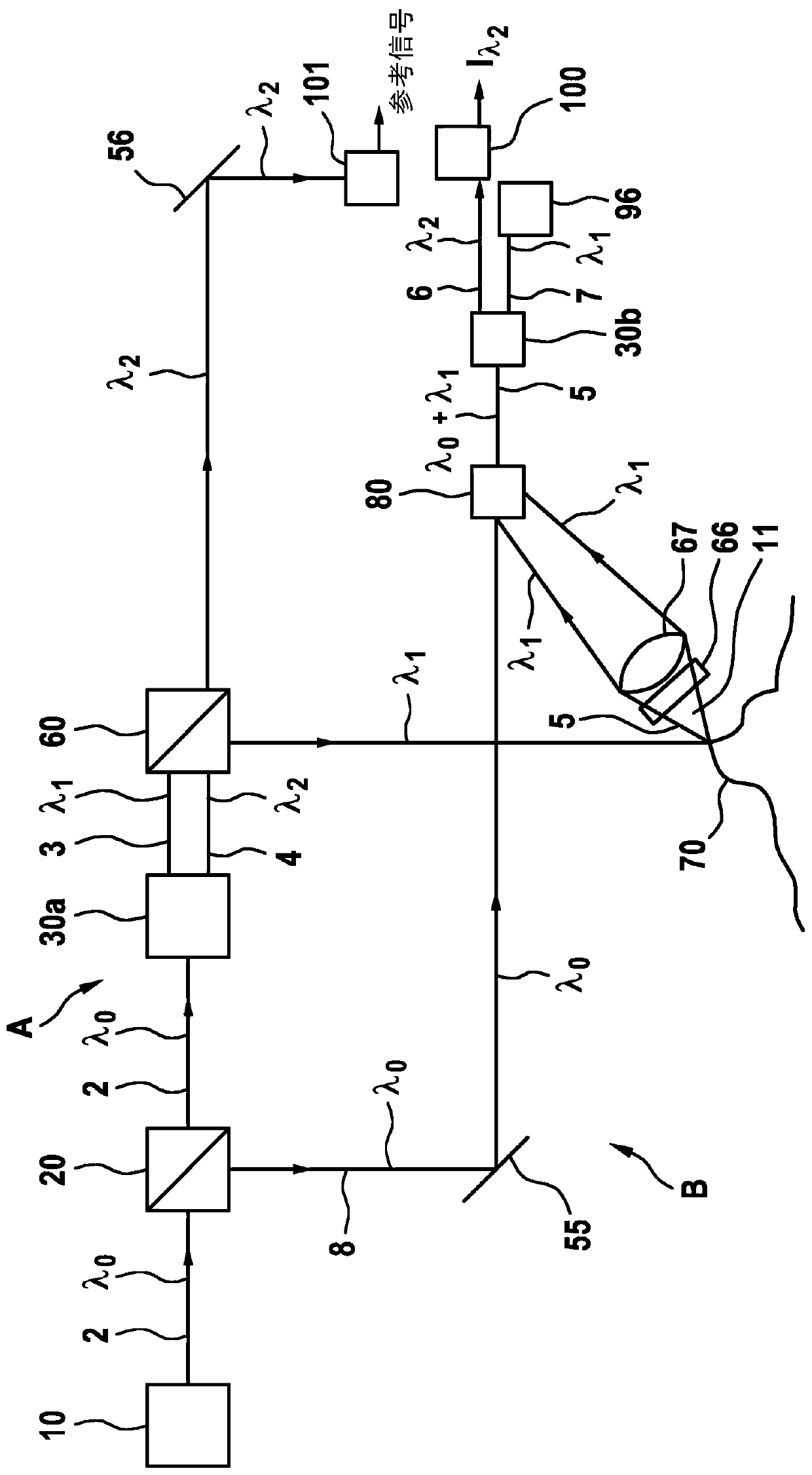Method for providing a detection signal for objects to be detected
A technology for detecting signals and objects, used in the field of providing detection signals for objects to be detected, can solve problems such as low signal-to-noise ratio and low range of action, achieve high sensitivity, improve flexibility, and save manufacturing overhead. Effect
- Summary
- Abstract
- Description
- Claims
- Application Information
AI Technical Summary
Problems solved by technology
Method used
Image
Examples
Embodiment Construction
[0047] exist figure 1 A sensor device according to an embodiment of the invention is shown in .
[0048] First, by means of the laser 10 a laser with frequency f laser or wavelength λ 0 (eg 531 nm) laser beam 2 . The power of the laser 10 consists of a continuous level I 1 and pulse level I 2 The pulse-like modulation of the current source control. The laser 10 accordingly emits a continuous power P of, for example, 1 mW 1 and a pulse power P of eg 50W 2 . The pulse width is for example between 1 ns and 10 ns, preferably between 2 ns and 8 ns, especially between 4 ns and 6 ns.
[0049] The laser beam 2 is supplied to the nonlinear crystal 30 . The nonlinear crystal can be composed of (periodically poled) potassium titanyl phosphate, (periodically poled) lithium niobate, (periodically poled) stoichiometric lithium tantalate, barium borate, lithium triborate , manufactured from bismuth borate and / or potassium dihydrogen phosphate. In a first step, parametric fluoresce...
PUM
 Login to View More
Login to View More Abstract
Description
Claims
Application Information
 Login to View More
Login to View More - R&D
- Intellectual Property
- Life Sciences
- Materials
- Tech Scout
- Unparalleled Data Quality
- Higher Quality Content
- 60% Fewer Hallucinations
Browse by: Latest US Patents, China's latest patents, Technical Efficacy Thesaurus, Application Domain, Technology Topic, Popular Technical Reports.
© 2025 PatSnap. All rights reserved.Legal|Privacy policy|Modern Slavery Act Transparency Statement|Sitemap|About US| Contact US: help@patsnap.com



